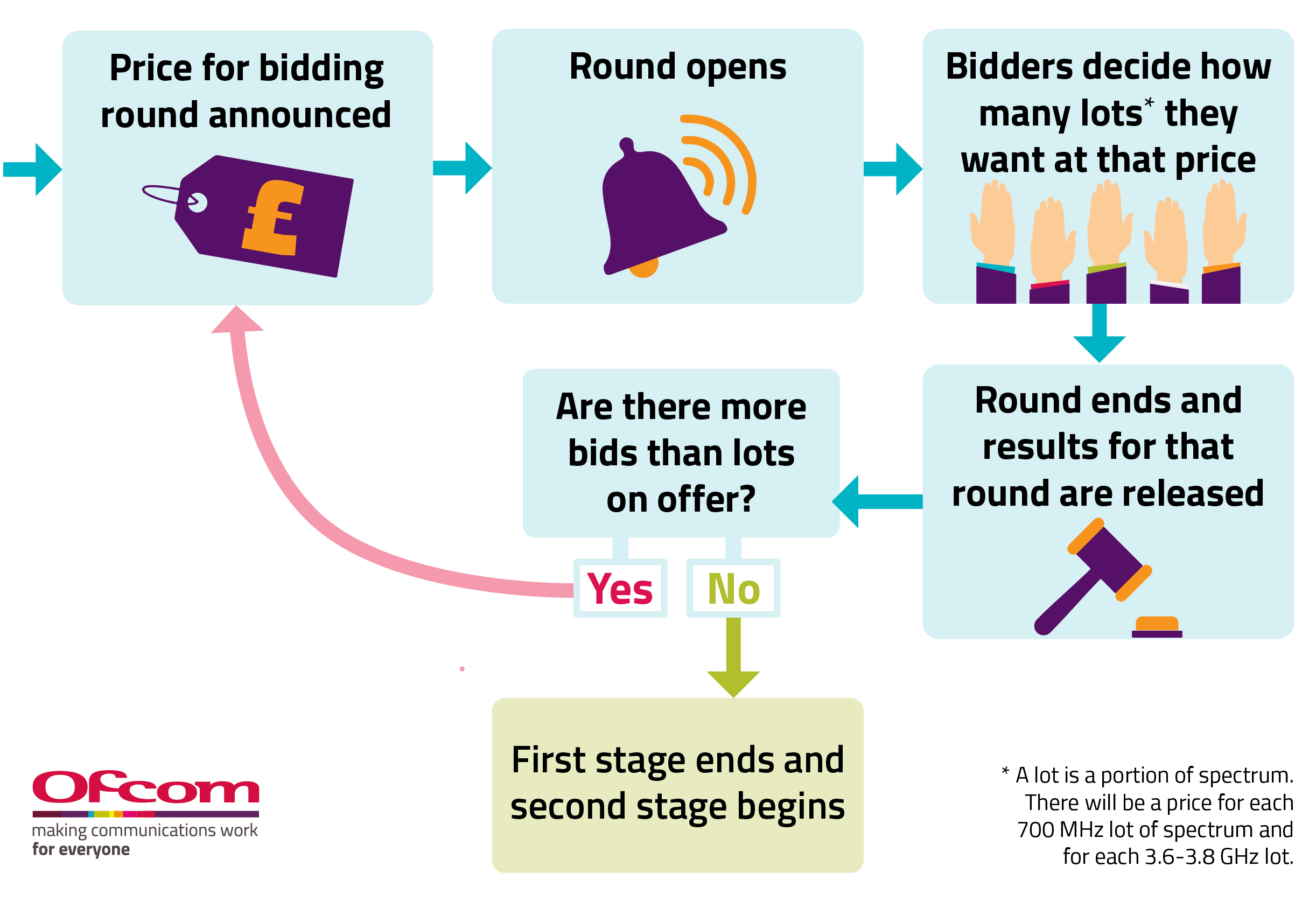This week Ofcom is launching the latest spectrum auction, which will result in better mobile services and better access to 5G technology.
The auction will increase the total amount of spectrum available for mobile technology in the UK by nearly a fifth, bringing better and faster services to people and businesses.
You can’t see or feel radio spectrum. But any device that communicates wirelessly needs spectrum – such as televisions, car key fobs, baby monitors, wireless microphones and satellites. Mobile phones use spectrum to connect to a local mast so people can make calls and access the internet.
Only a limited amount of spectrum is available, so it needs to be managed carefully. Certain bands of spectrum are also used for different purposes. For example, mobile companies use different parts of the spectrum to TV companies. So, it needs to be managed to prevent services interfering and causing disruption to people and businesses.
This auction will involve companies bidding for spectrum in two different frequency bands.
The 700 MHz band. We are releasing 80 MHz of spectrum in the 700 MHz band, following a four-year programme to clear the band of its existing uses for digital terrestrial TV and wireless microphones. These airwaves are ideal for providing good-quality mobile coverage, both indoors and across very wide areas – including the countryside. Releasing these airwaves will also boost the capacity of today’s mobile networks – offering customers a more reliable service.
The 3.6-3.8 GHz band. We are releasing 120 MHz of spectrum in 3.6-3.8 GHz band. These airwaves are part of the primary band for 5G and capable of carrying lots of data-hungry connections. All four of the biggest mobile operators have launched 5G in the last year and releasing these airwaves will help increase the capacity and quality of mobile data services.
Four companies will be bidding in the auction: EE Limited; Hutchison 3G UK Limited; Telefónica UK Limited and Vodafone Limited.
How will the auction work?

The auction will have two bidding stages.
The main one, called the principal stage, comes first and takes place over a number of rounds. In each round, prices go up with bids, and the bids determine how much spectrum each party acquires.
The principal stage begins with all the spectrum being made available at a reserve, or minimum, price. There is one reserve price for each 700 MHz portion, or lot, of spectrum; and another price for each 3.6-3.8 GHz lot.
The reserve price for each 700 MHz individual frequency lot is £1m, and there are four lots of spectrum (each of 5 MHz). The reserve for each 700 MHz paired frequency lot is £100m and there are six lots of spectrum (each of 2x5 MHz). The reserve price for each 3.6 GHz lot is £20m and there are 24 lots of spectrum (each of 5 MHz).
Bidders will bid for a number of lots in each band at the given price, which is set by Ofcom.
If demand for the available lots is equal to, or larger than, the amount available, then the price for each frequency band will go up in the next round. Bidders will then be invited to bid at the new, higher, price – again, set by Ofcom.
The principal stage ends when there are no new bids in a round. At that point demand across all bidders in the auction will essentially have matched the available supply, and winning bidders will know how much spectrum they have won.
The winning bidders will pay the price of their last bids.
The second stage, called the assignment stage, takes place over a single round and determines the precise frequencies of the airwaves won by each bidder.
In the assignment stage, winning bidders from the principal stage bid to locate the spectrum they have won at particular frequencies within the band.
Unlike in the principal stage, bidders in the assignment stage will pay the price set by the highest losing bidder. This is known as the ‘second price’ rule, and is similar to how bidding works on eBay, for example.
Winners of spectrum in the 3.6-3.8 GHz band will also have the opportunity to negotiate the specific frequencies among themselves – if they want to join together the airwaves they have secured within the band.
Following bidding in the assignment stage there will be a pause of up to four weeks before processing assignment stage bids, to allow a negotiation period where bidders can agree the assignment of 3.6-3.8 GHz spectrum. During the initial phase of this period, winners of 3.6-3.8 GHz spectrum will have an opportunity to agree unanimously on the assignment of the 3.6-3.8 GHz band. In the event that bidders are unable to reach unanimous agreement during this period, there will be an additional phase during which one or more subset(s) of bidders may agree to be assigned blocks of spectrum which are adjacent to each other.
When will we know the results?
Spectrum auctions can take some weeks to complete. The length will depend on the level of demand for the spectrum being made available.
At the end of each day during the principal stage, we will publish:
- the prices for 700 MHz and 3.6 GHz lots in the last round for that day; and
- a measure of demand in each band, called ‘excess demand’, also in relation to that last round of the day.
Excess demand refers to the active demand for spectrum in each band, in excess of the available supply.
When the auction is complete, we will publish full details of the spectrum secured by each bidder.
The money raised by this auction will be passed on to HM Treasury.






